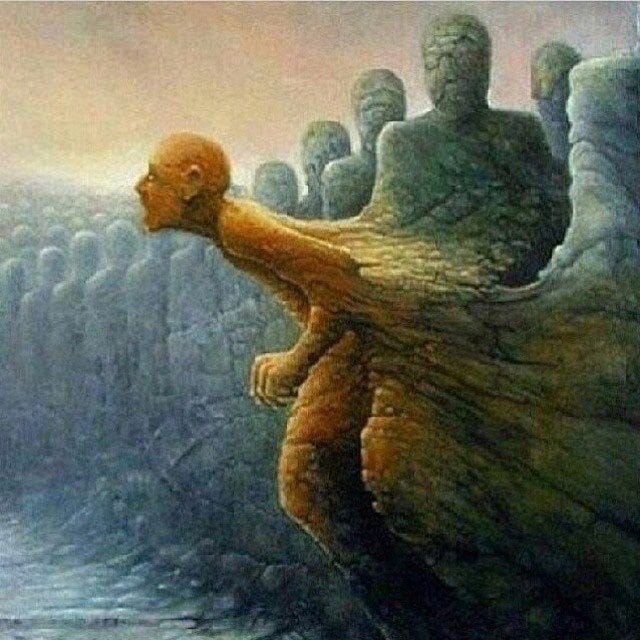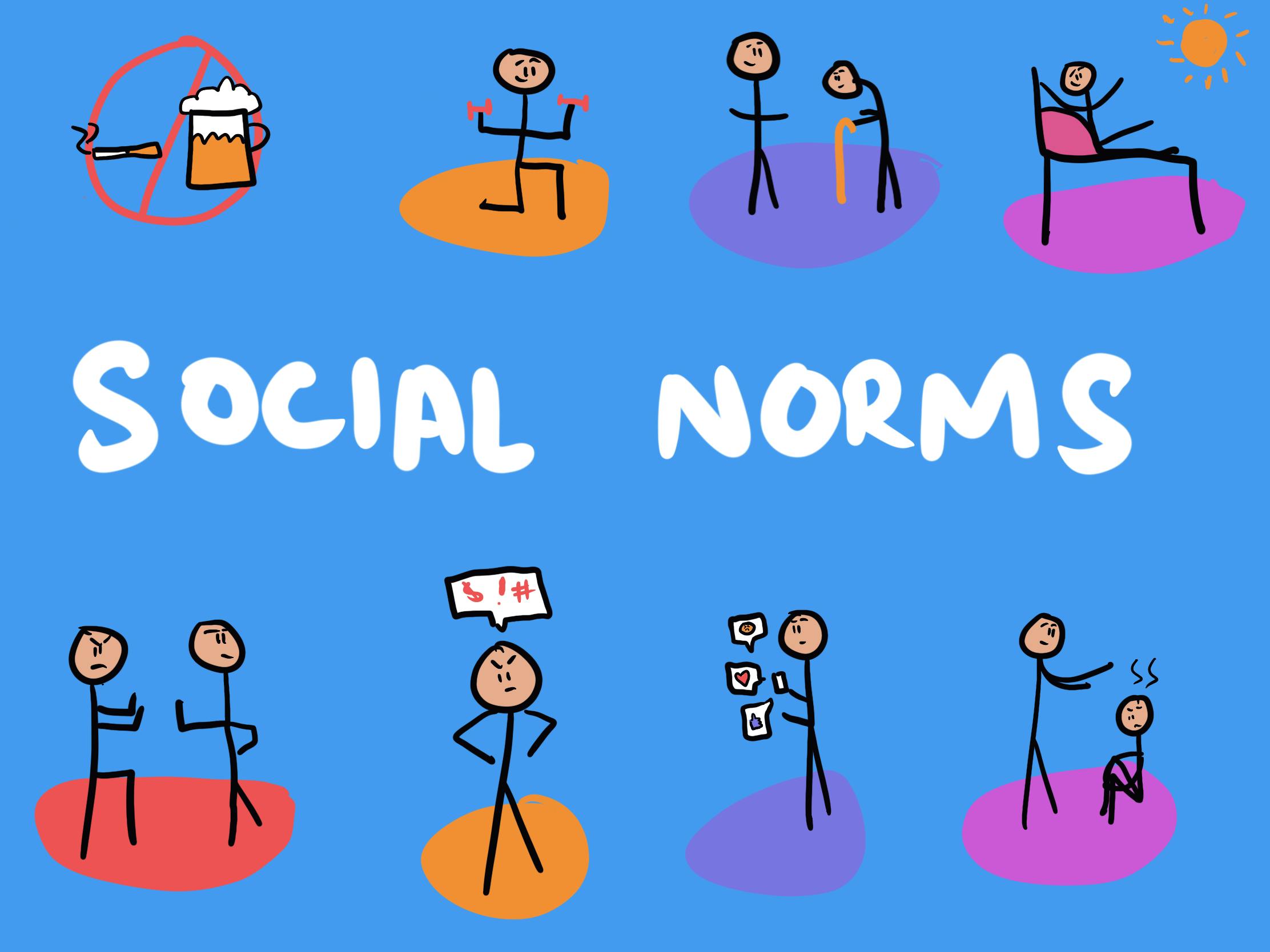6 Chapter Six: Aging in Sport
Section One: The Fundamentals
A) Keywords
Exercise 1:
Provide a brief definition of one of the padlet keywords for this week.
|
In her text, Elizabeth Pike (2015) states the third age to be a part of old age where it is a “period of withdrawal from paid work during which people continue to enjoy active lives in good health” (Pike, 2015). For anyone interested please check out: https://worldingdifference.ca/modules/aging-arts-accessibility/ . This link will take you to Aging, Art and Accessibility which directly connects to Pikes understanding of aging and sport, where aging is displayed through art and storymaking to create counter-narratives that produce nuanced, and diverse understandings of aging through the perspectives of aging people and the art they produce.
|
B) The Social Significance of Aging in Sport
Exercise 2: Notebook Prompt
How is old age popularly represented today? Find an image online that you think exemplifies one defining attitude towards old age and paste in your notebook below with a brief explanation of what this image means to you.
| In countries that are Eurocentric, age is frequently seen unfavorably. Because of the linear nature of time, we tend to identify our most valued years with our capacity to produce and make economic contributions, especially at times when women’s fertility is at its highest. On the other hand, Indigenous wisdom values people’s contributions at every stage of life and adopts a cyclical view of age. But in the West, people who are unable to monetize their work are often marginalized and treated as unimportant. In an effort to maintain our relevance and fend off the passing of time, neoliberalism and capitalist ideologies encourage us to purchase more because they use our dread of aging and death as control mechanisms.
This image shows the erasure of older individuals as they are deemed invaluable in Western society as a tactic of colonial domination. |
Exercise 3: Notebook Prompt
What does the article (referencing another study by Dionigi) mean by its statement that sport can help aging people to simultaneously “accept and resist the ageing process” (572)? Respond by audio or text and find paste two images sourced online into your notebook showing how sport might help aging people to both accept and resist the aging process.
| This quote highlights the physical and mental challenges that come with aging. By engaging in sports as we grow older, we not only confront the false notion that we can’t participate in the same way we did in our youth, but we also embrace our current status while benefiting brain health. This mindset combats ageism and reinforces our ability to remain active in sports as we age, conveying a dual message.
|
Exercise 4: Notebook Prompt
Who are the groups less likely to have extensive opportunities to take part in sports, according to Pike? How does privilege factor into aging and sport? (200 words max)
| People with physical and mental disabilities, those who are underweight or fragile, members of minority ethnic groups, people living in care institutions, and people living in rural areas confront major obstacles when it comes to playing sports. Being able to play sports both physically and mentally is a blessing that many people may not realize. Based on a Eurocentric perspective, people who fit the conventional ideals—typically being white, able-bodied, middle-class, and frequently male—enjoy more privilege than those who don’t, especially in the West. As a result, for those of us who are able to play sports, we can improve our mental and physical health, which is an invaluable commodity that makes our lives richer. |
Exercise 5: Padlet Discussion
Why do you think age discrimination is “reported more than any form of prejudice” with older people presented as a threat to social values and interests? Feel welcome to use video in your responses. Paste your comments (or transcript of your video) below!
|
In our modern capitalist and neoliberal society, people (older individuals) who are unable to make economic or reproductive contributions are frequently seen as either expendable or even dangerous. Many intersecting factors, including race, class, ethnicity, and socioeconomic status, contribute to the pervasive discrimination these people experience. This problem is prevalent in society as these conversations are dominated by white frameworks and viewpoints, which often influence the narrative as white people are the normative in society, and everyone ages. Therefore, because white people are affected by these issues, it is highly discussed.
|
B) Older Women and Sport
Exercise 6: Notebook Prompt
What differences do you see in these ads? Which one is more inclusive? How is age represented or not represented in each? Answer these questions in your notebook.
| The Nike ad is more inclusive regarding sex, race, sexuality and disability compared to the This Girl Can ad, as many different lived experiences are represented. However, both fail to incorporate older athletes into their advertisements. All of the athletes depicted seemed to be under 40 (approximately), excluding the lived experiences of athletes who may be of a higher age. |
Exercise 7: Notebook Prompt
In her article, “Assessing the sociology of sport: On age and ability,” Elizabeth Pike references a “trend towards a ‘feminisation of ageing’, with many women living longer than men” (573). Do you agree that aging has been “feminized” in this way? How? Answer these questions in your notebook.
| In her 2015 work, Pike addresses the concept of the “feminization of aging,” highlighting that women generally outlive men, despite a decline in physical activity levels among women in later life, influenced by societal expectations. However, I challenge this notion, arguing that patriarchal messaging has ingrained in us the idea that women should fear aging. This fear drives the consumption of products marketed to “reverse” the aging process. I contend that the longevity of women is more closely related to their relationship status than to their involvement in sports.
I don’t think biological sex and sports activity have an immense impact on life expectancy because gender is a socially constructed term. Rather, I contend that physical and mental health are essential to personal experiences of health, which are closely linked to the nature of women’s relationships. The importance of these social interactions is further highlighted by the intriguing finding that heterosexual married women frequently live shorter lives than their unmarried counterparts (Thomas & Umberson, 2017).
Thomas, P. A., Liu, H., & Umberson, D. (2017). Family Relationships and Well-Being. Innovation in Aging, 1(3), igx025.
|
Section Three: Module Mini Assignment
| 1) In recent years, pickleball has been a training activity, particularly appealing to older demographics seeking opportunities for recreation and social engagement. This is becasue pickleball has been seen to enhance social connections, life satisfaction, and psychological well-being for older athletes (Moore et al., 2015; Ryu et al., 2018).
In Anselmi (2024), the planned development of pickleball courts in Bonnerworth Park, Peterborough, has ignited fierce debate among residents and politicians, as residents aim to enhance pickleball’s accessibility and community well-being, there are concerns regarding the transformation of public green spaces into sport-centric facilities. The displacement of existing baseball diamonds and tennis courts in favor of paved pickleball courts raises questions about the environmental and emotional impact of such changes on the community (Anselmi, 2024). The rising interest in pickleball amongst older adults can be understood through Elizabeth Pike’s examination of age and physical activity in her study of the sociology of sport, Assessing the sociology of sport: On age and ability. In her examination, Pike (2015) puts forth that societal expectations dictate what sports are perceived to be acceptable for older adults, with many pressuring older adults not to engage in vigorous physical activity. In this context of Peterborough, pickleball is an alternative to engaging in sport; it not only supports physical activity but promotes a social environment with others who are older, fostering a sense of community that can diminish feelings of isolation. Nevertheless, and entirely unintentionally, this has come to support the larger and potentially damaging agenda for older adults to become physically active purely to combat societal anxieties of aging and decline (Pike, 2015). Public sentiment in Peterborough is not solely focused on preserving recreational facilities but also addresses the growing concern for maintaining the ecological integrity of parks. Many residents believe that the pivot toward constructing specialized sports facilities undermines the essence of what a park should be—an accessible, green space that enhances biodiversity and offers varied recreational opportunities. Additionally, this push for pickleball courts does contribute to individual health goals, however, it simultaneously overlooks the diverse needs of those who cherish the park’s current offerings for family play and various sports (Anselmi, 2024). The dialogue about pickleball facilitation and carefully maintaining green space leads to important questions about redevelopment, city planning, and the values we place on community parks. According to Pike (2015), the language of sports often frames older adults from a paternalistic view, indicating the need to remain active to “avoid being a burden” to society. However, reinforcing stereotypes of negative aging language ultimately downplays the importance of valuing leisure and enjoyment out in nature.
2) Media representations of older pickleball athletes often highlight their active engagement in the sport, framing them as dynamic and vibrant rather than passive or frail. This portrayal counteracts prevailing stereotypes of aging, although ageism can manifest subtly in these narratives. Discussions on social media sometimes trivialize the accomplishments of older players by emphasizing age as a novelty, rather than recognizing it as a testament to their skills and dedication (Ryu et al., 2018). Such representations may reinforce the notion that physical activity like pickleball is essential for a “successful” and fulfilling later life, which aligns with neoliberal ideologies emphasizing personal responsibility and self-improvement (Pike, 2015; Ryu et al., 2018). Neoliberal policies concerning aging may also be seen in the portrayal of physical activity to do more than for enjoyment or fun, but rather as a mechanism for reducing the perceived burden of aging. Discussing the promotion of physical activity, relating to aging, Pike (2015) argues that the effort is couched in an anti-aging framework and portrays aging as something one should avoid (Pike, 2015). For instance, activities promoting pickleball with the expressed intention of bettering health may insinuate that individuals must play the sport, with the purported reasoning to highlight worthiness, further burdening your older athletic community (Pike, 2015; Ryu et al., 2018). This discourse risks marginalizing people who do not fit into the societal expectations of fitness. Research suggests older adults often experience cultural and structural barriers – e.g., embarrassment when exercising and a lack of access to specific equipment – that limit their engagement in sport (Pike, 2015). Therefore, this framework of “successful aging” perhaps limits a generous definition of vitality in our aging culture (Pike, 2015). In this respect, celebrating older pickleball players looking to be active, it is important to consider the possible implications of framing their engagement in sport through the neoliberal lens that they are being productive, allowing them their agency while disregarding the lack of access and opportunity related to residual socio-economic factors and ageism (Ryu et al., 2018; Pike, 2015).
Citations Moore, D., Orsega-Smith, E., & Goodwin, S. (2025). Motivational Differences Among Older Adult Pickleball Players. Activities, Adaptation & Aging, 1–24. Ryu, J., Yang, H., Kim, A. C. H., Kim, K. M., & Heo, J. (2018). Understanding pickleball as a new leisure pursuit among older adults. Educational Gerontology, 44(2–3), 128–138.
|








